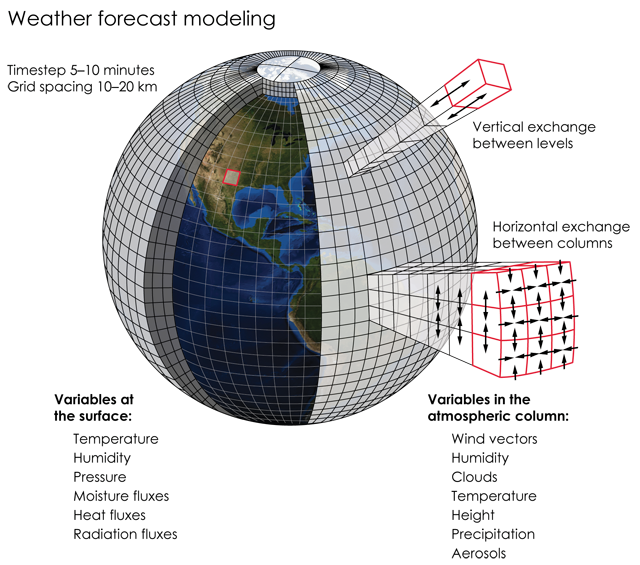TWIL #35: From Weather Apps to Popcorn

Every Sunday, I share a few of my learnings, reflections, and curiosities from the week. Things I stumbled upon, things I questioned, things that made me look twice. It’s not about being right or complete… it’s about noticing, wondering, and learning out loud.
Thanks for reading. I hope it sparks something for you too.
Why weather apps can’t agree
Yes… another one on weather!
Next week I’m going cycling in Girona with some friends. For days now, our group chat has been filled with screenshots of weather forecasts. One app says sunshine, another warns of rain, and yet another paints the whole ride in thunderstorms. Same place, same dates: completely different stories.

It made me curious: how can weather apps look at the same sky and disagree so much? So I decided to dive a little deeper into how these forecasts are made.
The forecast behind the forecast
On your phone, a weather app looks simple: a neat icon ☀️🌧️ and a number. But behind that is one of the most ambitious feats of modern science: simulating the entire atmosphere with mathematics.
At the core are numerical weather prediction models (NWP) — vast systems of equations designed to mimic how air, water, and heat behave.

The equations of the sky
The models are built from physics:
- Fluid flow equations to show how air masses move.
- Thermodynamic rules for how air warms, cools, and condenses into clouds.
- Continuity equations to keep track of moisture and pressure.
- Radiation formulas for how sunlight warms the Earth and how heat escapes back into space.
In theory, if you had perfect data and infinite computing power, you could predict the future atmosphere exactly. In practice, the system is chaotic… tiny unknowns ripple into big differences.
Breaking the world into boxes
To make the math solvable, models chop the atmosphere into a 3D grid: boxes stacked across the globe and up into the sky.
- Each box has values for temperature, wind, humidity, pressure.
- Equations calculate how conditions in one box flow into the next.
- Step by step, the computer moves the atmosphere forward in time.
The smaller the boxes, the sharper the detail. But smaller boxes also mean heavier computing loads and forecasts can’t take weeks to run. That’s why models balance detail with speed.
The Butterfly problem
To start the simulation, you need a snapshot of the atmosphere right now. That comes from:
- satellites circling the planet,
- weather balloons rising through the layers of air,
- thousands of ground stations,
- even aircraft and ships feeding in pressure and temperature.
But we never know the atmosphere perfectly. Miss a detail here or there, and the “butterfly effect” takes over… one small error can bend the future.
That’s why forecasters don’t run a model just once. They run it dozens of times, each with slightly different starting conditions. These are called ensembles.
If 3 out of 10 runs predict rain in Girona and 7 predict sunshine, the app translates that into “30% chance of rain.”
This is where apps can really diverge: one app may weigh the “rain” runs more heavily, another may downplay them, and suddenly your friend’s screenshot shows storms while yours shows clear skies.
The human touch
Some forecasts are purely automated: raw model output turned into icons. Others are adjusted by meteorologists who know local quirks. For example, how often storms fizzle out before reaching Girona’s mountains. A human tweak can tilt the story.
So, back to our cycling trip. Are we riding into storms, sunshine, or both? The truth is: all those apps are giving us probability sketches, not certainties. They’re different storytellers, interpreting the same chaotic system.
Maybe that’s the real lesson: the weather, like life, is rarely about certainty. It’s about ranges, chances, possibilities. Pack your sunscreen. Pack your rain jacket. And keep cycling.
For this week that’s it… I am so busy right now (it’s Thursday as I’m writing this), wrapping up work, preparing for the trip… and I also want to keep the evening free for family: a good movie, a big bowl of popcorn.
Oh wait… popcorn. Okay, I got curious how it actually works. Here’s what I found:
The physics of popcorn
Each kernel is apparently a miniature pressure cooker. Inside the hard outer shell (the pericarp) is a drop of water tucked into the starchy interior. Heat it up, the water turns to steam, the pressure rises. At about 180°C (356°F), the shell bursts, the starch expands instantly, and you get that fluffy white cloud.
The funny shapes are really frozen explosions: the starch cools so fast it “sets” in whatever shape it stretched into. And those stubborn unpopped kernels? Their shells had tiny cracks that let steam escape before the pressure could build (how dare they!).
So next time you hear that crack and pop, you’re listening to little pressure cookers bursting into edible fossils of chaos.
Curiosity never stops!





